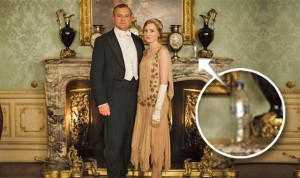I’m not exactly sure what it was, but the second part of this book didn’t quite grab my attention like the first half. The examples didn’t seem as diverse as in the first half, perhaps since they were all surrounding the theme of artists in public history, and maybe because it didn’t enter discussions of agency, shared authority, and the role of visitors like the first half. I thought they kind of beat a dead horse in showing how the two fields of art and history could converge, but that is just my opinion.
I thought the piece on community performance in West Philadelphia did a good job at exploring issues of power in embarking on a project in a disadvantaged community. I liked how Yalowitz stressed his and the students’ role of being led by community members, acting as listeners and learners, then offering their skills to assist the residents in telling their story. This is an important aspect of the community-collaboration model, especially when working in historically oppressed communities. It was interesting to consider the ways that the project itself could be at danger of repeating institutional racism in the way it was carried out.
Like others, I have been interested in StoryCorps for a while now so it is interesting to see representations from advocates and critics of their work, and the different spheres it can be evaluated in: history or…not history. I think it is very possible to appreciate it for what it is, not for by-the-book oral history and its traditional uses, but for “inculcating history-mindedness.” It encourages broader audiences to consider the stories and hidden pasts of everyday people, and appreciate the every-man role in making history. These aren’t groundbreaking reflections, just reminders that arise from considering the subject in the readings.
Perhaps the most intriguing example of art in public history for me was Dennis Sever’s House. House museums are such a ubiquitous part of the American historical landscape, from the really mundane to the extraordinary, so it was interesting to consider it in a sort of upside down approach. I think I might prefer the absence of a docent, though it would be unsettling not to have any reference or interpretive material. I like the idea of having it appear lived-in, as a snapshot of a specific time in a way that comes to life. Sever’s house is troubling for historians in that it is more of an art installation than a typical historical site, with anachronistic features arranged throughout. I think it is both satisfying and troubling in the same vein that historical fiction is to academics; it is “real” enough to be immersed in it, but chock-full of historical inaccuracies that in some ways serve to paint a prettier or more vivid picture. So do you credit it for drawing in the atypical visitor/audience, or discount it for all of its fluff and incorrect history? I think I would quite like to visit Sever’s house, it reminds me of being on the set of a historical drama – like Downton Abbey, plastic water bottle on the mantle included.
